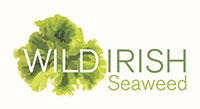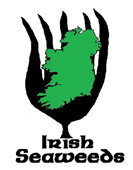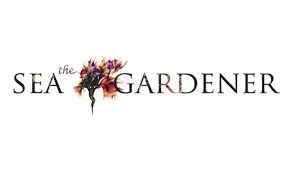Undaria pinnatifida (Harvey) Suringar
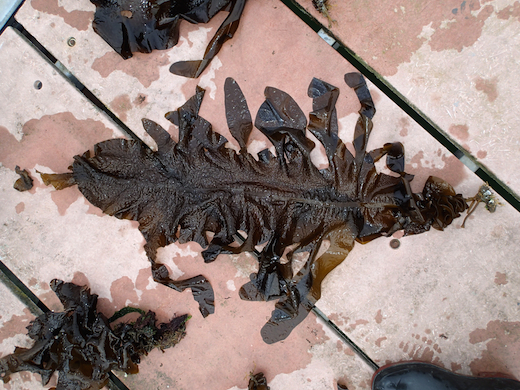
Description: Thallus laminate, yellowish to dark brown, usually 1-2 m, occasionally 3 m or more in length; holdfast spreading, dichotomously branched and claw-like, giving rise to a flattened oar-like stipe with a "fried-egg" like margin with small proliferations and basally with beautifully lobed sporophylls that coil around it when mature; stipe continuing into the fond as a flattened midrib that bears broadly lobed laciniate fronds with a roughly pyramidal shape.
Habitat: lower intertidal and very shallow subtidal (no more than a few m), particularly in sheltered locations, growing particularly on marinas, buoys, and similar floating structures in harbours. Often occurring on boat-hulls.
Distribution: Adventive in NE Ireland (Minchin & Nunn 2014; top and below, from Carrickfergus, Co. Antrim), S England, NW France, NW Spain, Mediterranean. Native to Pacific Russia, Japan, China and Korea.
Key characteristics: Frilly sporophylls coiling around the base of the flattened stipe at the base. A similar flattened midrib is not found in any other kelp in the Atlantic. Alaria esculenta has a midrib which is not flattened and the frond of Alaria is not lobed, although it may be similar laciniate.
Uses: cultivated and collected in the wild in Japan, China and Korea for human consumption as "Wakame" (Japan) and cultivation on ropes was successfully carried out in Brittany for a time. Fucuiodan from Wakame may be effective in the prevention of certain cancers.
Notes: this is an introduced species from the W Pacific, now found in the NE Atlantic and the Mediterranean. Elsewhere similar adventive populations have been found in New Zealand, Tasmania, and Argentina. It is thought to have been introduced into the southern hemisphere by fishing fleets from SE Asia. The plants shown here are from Tasmania. Undaria is a particular pest in Venice (see bottom two pictures) where plants foul the step leading to St Mark's Square (right) and cover the anchor chains of the vaporetto and traghetto stops (left).
Reference: Minchin, D. & Nunn, J. (2014). The invasive brown alga Undaria pinnatifida (Harvey) Suringar, 1873 (Laminariales: Alariaceae), spreads northwards in Europe. BioInvasions Records 3(2): 57-63.
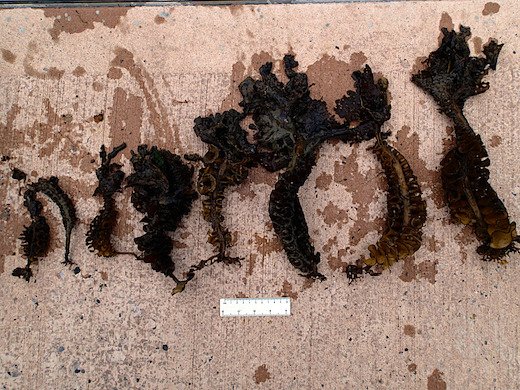
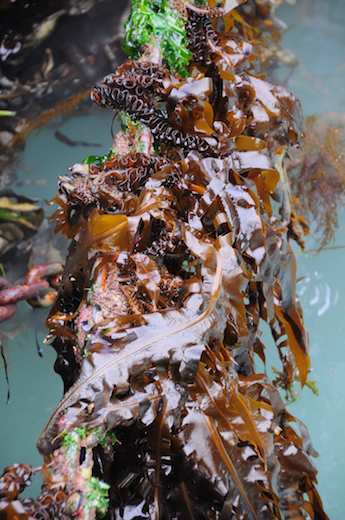
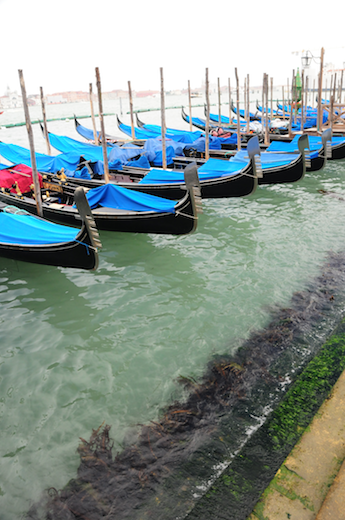
Photographs © Dan Minchin (top and middle from N. Ireland); M.D. Guiry (bottom two from Venice).

